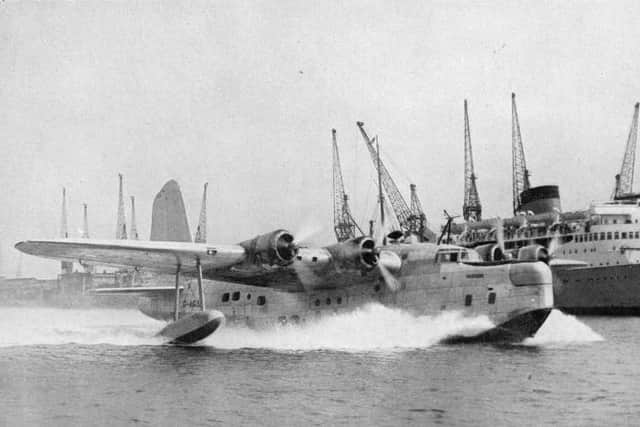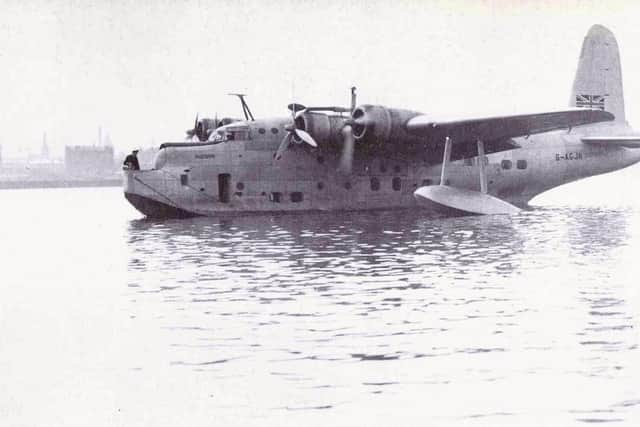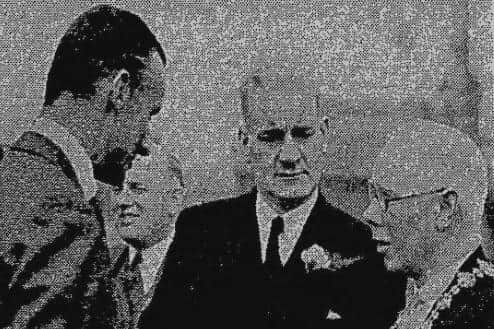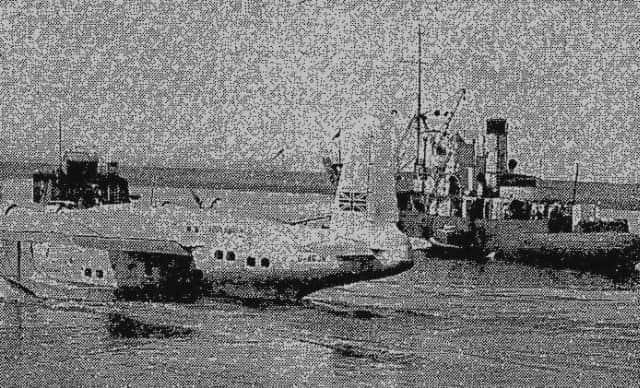When Leith had an airport with commercial flights to Southampton
This article contains affiliate links. We may earn a small commission on items purchased through this article, but that does not affect our editorial judgement.
When the Aquila Airways Hythe-class flying boat, Hudson, landed at Leith’s Western Harbour on 1 June 1950, it was tipped to kick-start a lucrative new era for the old port that would bring in thousands of visitors from England and – one day – from across the world.
But despite the best part of a decade of perseverance, Leith’s dreams of sustaining a busy marine airport capable of competing with the then fledgling Edinburgh Turnhouse would never materialise.


Origins
Advertisement
Hide AdAdvertisement
Hide AdThe idea to attract flying boats to the port was first hatched in 1928 when aviation pioneer Sir Alan Cobham touched down on the waters of Western Harbour to the cacophony of boat sirens and ship horns on a stage of his round Britain flight.
Moves to establish a working marine airport gained approval the following year from The Ministry of Civil Aviation. However, it would be another two decades before the plan took flight.
The project was revived in December 1949 when the Docks Commissioners received a letter from the Christian Salvesen company on behalf of Aquila Airways of London, which mooted the possibility of a seaplane service between Leith and Falmouth, Cornwall.


The letter, bolstered by the fact a Norwegian naval crew had successfully landed at Leith by flying boat only five months earlier, contained a request for Leith to be licensed as an airport.
A landing strip consisting of mooring buoys and other operational requirements were in place by March and the project given the go-ahead by the Air Ministry.
On 1 June, it was reported in The Scotsman that Lord Provost Sir Andrew Murray and other city dignitaries were present to welcome the first aircraft – Aquila Airways Hythe-class flying boat, the Hudson, which had successfully completed the first of two legs of its proving flight from Southampton.
To paraphrase a famous touch-down declaration from another era, the Aquila – Latin for “eagle” – had landed.


Scheduled to begin full operation on 7 July, the services, the first of their kind in Britain, would be run weekly and would cater for ship crews and holidaymakers, while also carrying cargo to and from the ports at Southampton, Leith and Greenock.
Advertisement
Hide AdAdvertisement
Hide AdIn a letter to the Lord Provost, Dr G H Barendt, Mayor of Southampton, wrote: “The members of Southampton Town Council join with me in expressing gratification that the capital city of Scotland and Britain’s number one passenger port are now brought closer together, and we hope that the Airport of Leith will ever be used for the benefit and service of men of good will.”
Speaking to the assembled crowds at Albert Dock basin, where the Hudson was moored, George Veitch, chairman of the Leith Dock Commission, noted that it was a historic day for the Port of Leith, adding that he hoped the service would not remain confined purely to coastal traffic, but would extend and become an international transport hub that Edinburgh its approaching festival could benefit from.
On completion of the 800-mile round flight, one passenger commented: “This has been the most comfortable flight I have experienced”.


A swift demise
Mr Veitch’s enthusiasm took a bit of a nose-dive by the end of the month, however, when it was revealed that the Aquila Airways service had attracted an almost total lack of bookings.
The high cost of fuel and fire-fighting facilities at each of the ports meant the airline was forced to set fares at £9 for a single and £16 4s for a return.
While single flights were cheaper, and, at just over two hours, far faster than the price of a first-class railway sleeper service, public uptake was never sufficient enough for Leith’s airport to continue in the long term and the idea was postponed.
Remaining hopeful that the project could one day turn a corner, the Docks Commission continued to renew its airport licence each year until 1959, when the Ministry of Transport pointed out that there were now no civil flying boat operators left in the UK.
Leith historian and local tour guide, Fraser Parkinson, praised the ambition of those involved, but admitted a high ticket price cost the project dearly.
Advertisement
Hide AdAdvertisement
Hide AdHe said: "This is one of my favourite snapshots of Leith's history and another fabulous Leith innovation.
“Sadly it was doomed because of the costs involved for passengers at a time when the average weekly wage was about £7.
“I guess Southampton wasn't the people's choice of destinations for Leithers, but the route did provide a direct link between two major ports north and south."
A message from the Editor:
Thank you for reading this story on our website. While I have your attention, I also have an important request to make of you.
With the coronavirus lockdown having a major impact on many of our advertisers - and consequently the revenue we receive - we are more reliant than ever on you taking out a digital subscription.
Subscribe to scotsman.com and enjoy unlimited access to Scottish news and information online and on our app. With a digital subscription, you can read more than 5 articles, see fewer ads, enjoy faster load times, and get access to exclusive newsletters and content. Visit https://www.scotsman.com/subscriptions now to sign up.
Our journalism costs money and we rely on advertising, print and digital revenues to help to support them. By supporting us, we are able to support you in providing trusted, fact-checked content for this website.
Joy Yates
Editorial Director
Comments
Want to join the conversation? Please or to comment on this article.